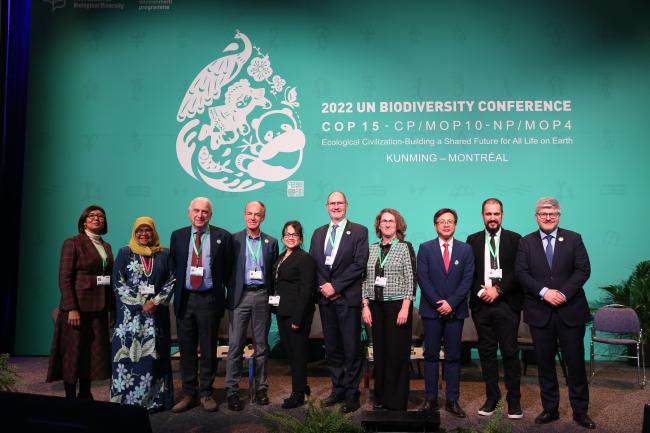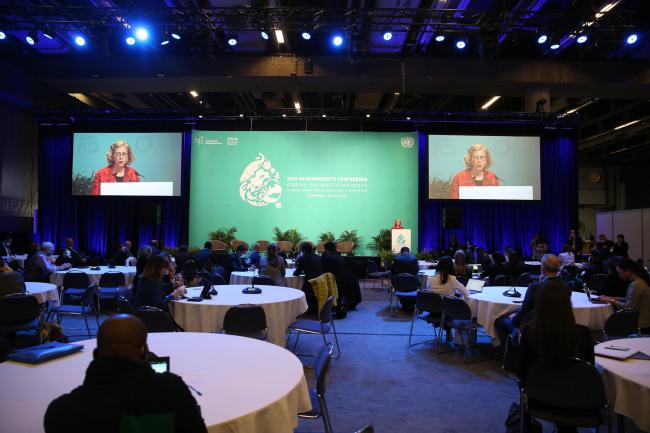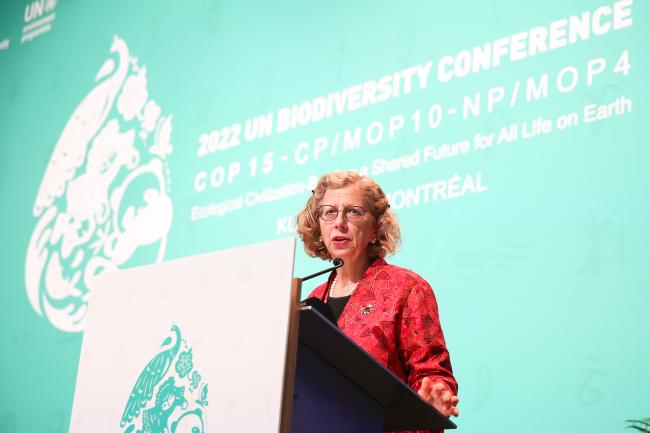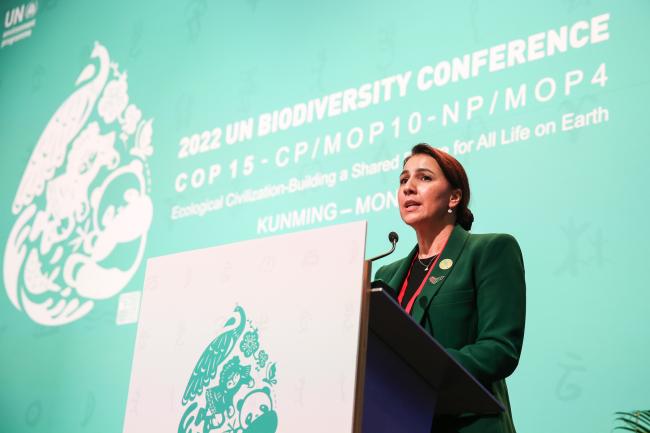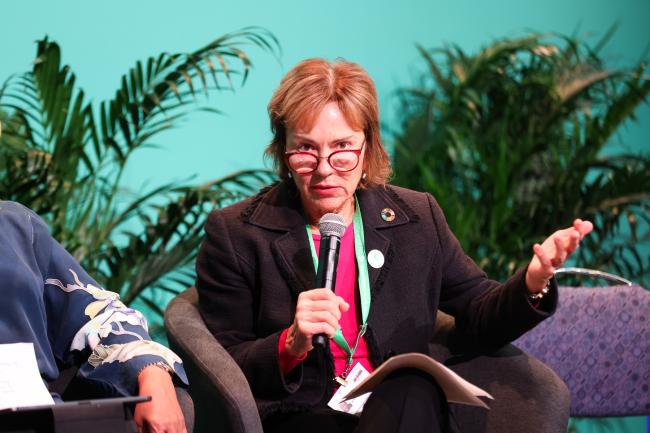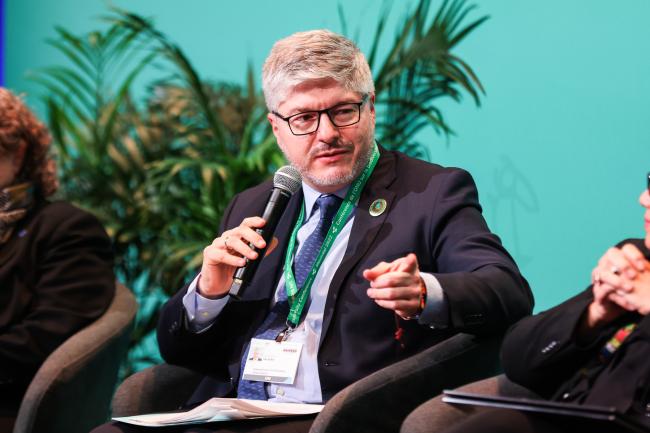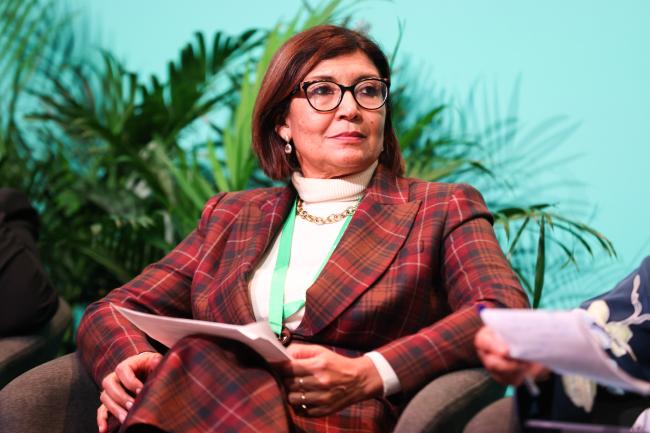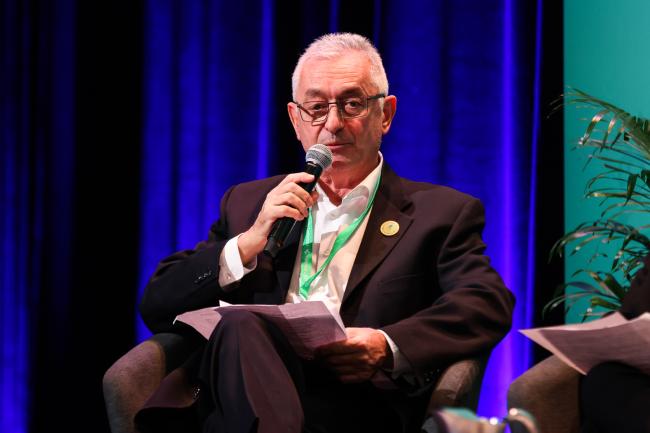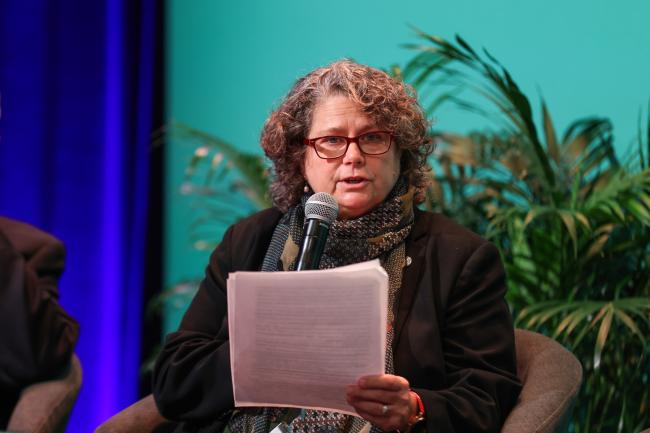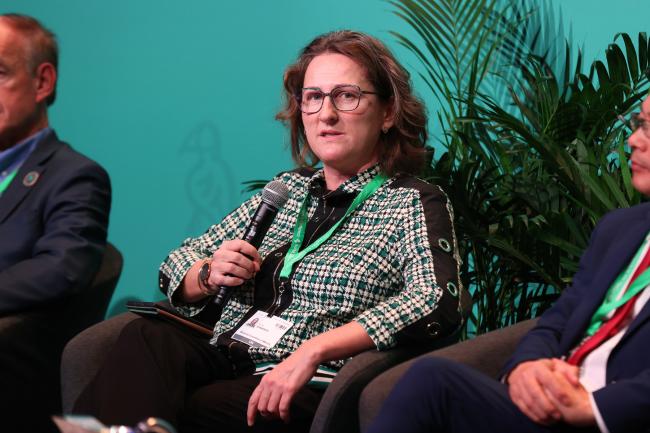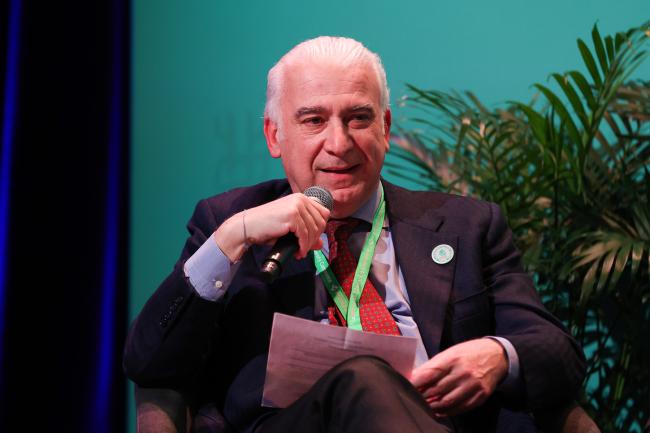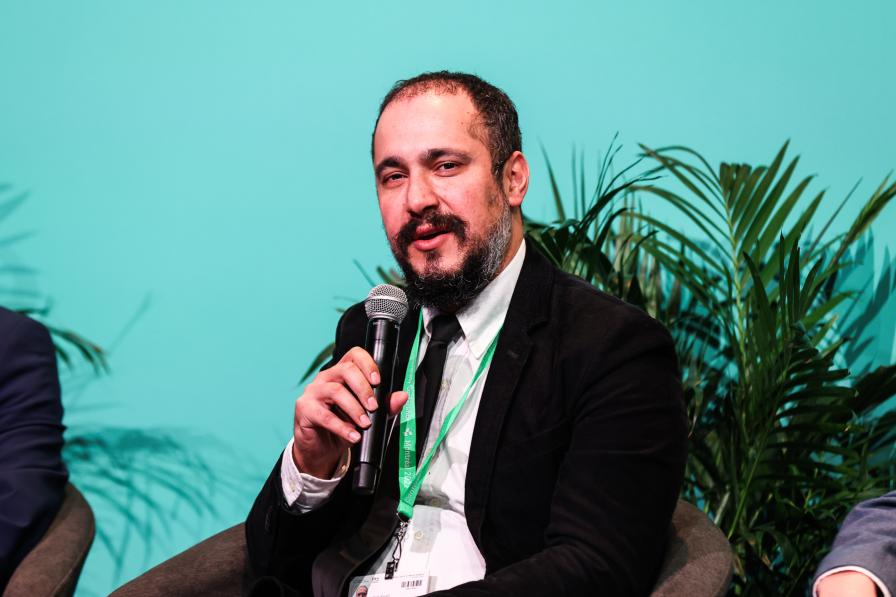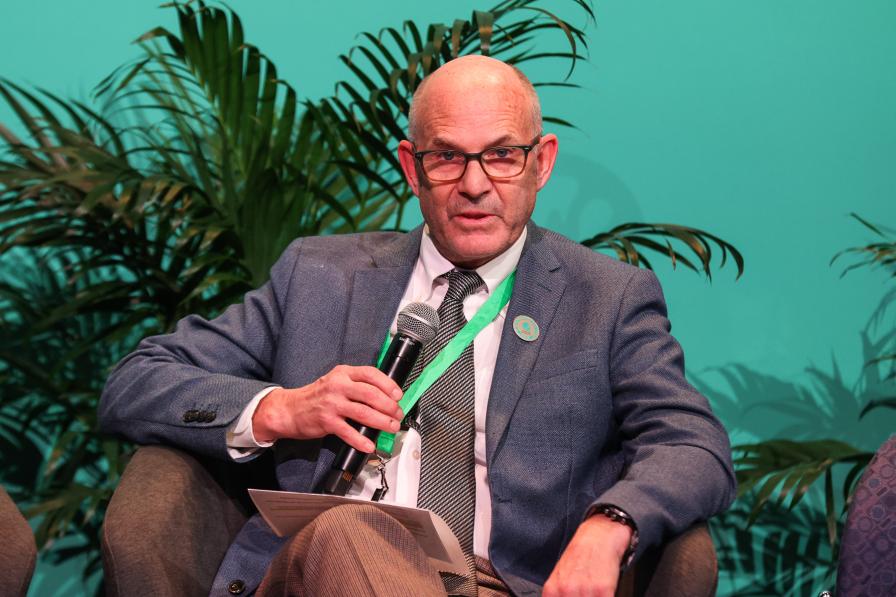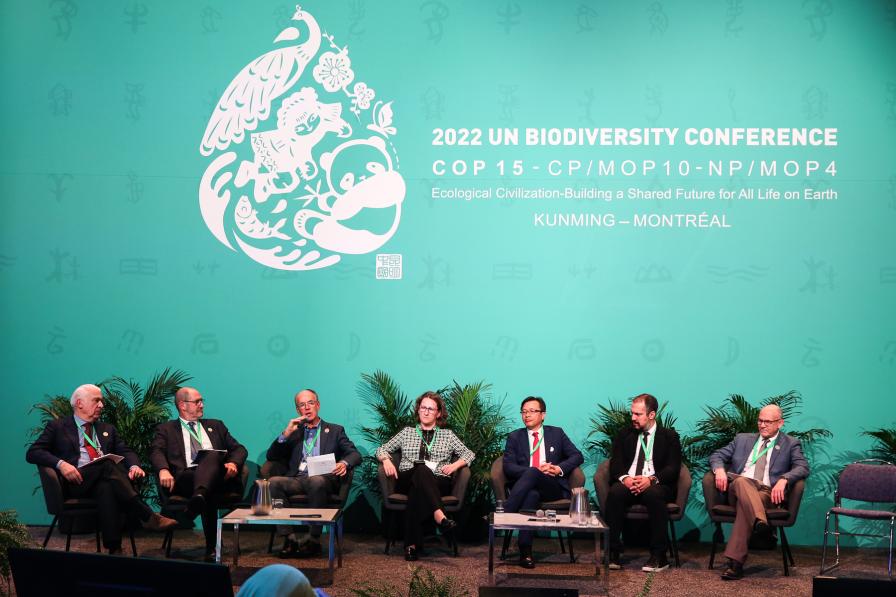About
This dialogue was organized by the UN Environment Management Group to catalyze UN system-wide commitments to implement the post-2020 global biodiversity framework.
The Common Approach to Integrating Biodiversity and Nature-based Solutions for Sustainable Development into UN Policy and Programme Planning and Delivery, approved by the UN Chief Executives Board in May 2021, was the focus of this dialogue, which was organized by the UN Environment Management Group (EMG) to catalyze UN system-wide commitments to implement the post-2020 global biodiversity framework (GBF).
Opening the dialogue, Inger Andersen, Executive Director, UN Environment Programme (UNEP), and EMG Chair, explained how the UN General Assembly established the EMG in 1999 to enable the provision of a common environmental narrative across the UN system to support governments. She called on participants to integrate biodiversity and NbS into their work, as delineated in the Common Approach.
In keynote addresses, Yasmine Fouad, Minister of Environment and Climate COP 27 envoy, Egypt, said governments have trouble mainstreaming biodiversity and the environment at large into national development plans. To make the GBF applicable, implementable, measurable, and ambitious, she said UN agencies must step in and start mainstreaming biodiversity in their own work, which will help national governments do the same.
Mariam Almheiri, Minister of Climate Change and Environment, United Arab Emirates (UAE), said governments must look to the power of NbS and educate and communicate this to their citizens. Stressing the importance of partnerships, she described the Mangrove Alliance for Climate. She called for innovations in conservation and restoration efforts, and pledged the 2023 UN Climate Change Conference, which the UAE is hosting, will also discuss implementation of biodiversity targets.
During the ensuing panel discussion, representatives from UN agencies and multilateral environmental agreements (MEAs) responded to two guiding questions:
- How can the UN system enhance its support to countries to implement the GBF through the UN Common Approach to Biodiversity?
- What can UN agencies do differently with the adoption of the GBF to implement the Common Approach?
Olga Algayarova, Executive Secretary, UN Economic Commission for Europe, spoke on behalf of the five UN Regional Commissions, and committed to help Member States develop robust national action plans to implement the GBF, taking into account regional realities, utilizing the UN Common Approach.
Maimunah Sharif, Executive Director, UN-Habitat, pledged to help translate the GBF into action on the ground by working with stakeholders and governments. She stressed the importance of involving cities and local authorities in biodiversity conservation to create “biodiver-cities.”
Juan Carlos Salazar, Secretary General, International Civil Aviation Organization (ICAO), described the organization’s contribution to the Common Approach through combatting wildlife trafficking, developing sustainable aviation fuels, and conserving biodiversity and ecosystem services near airfields.
Maria Helena Semedo, Deputy Director-General, Food and Agriculture Organization of the UN (FAO), said all sectors must be integrated to sustainably produce, transform, and consume food, while limiting biodiversity loss, adding that FAO brings policies, guidelines, and data to the table to support ecosystem restoration.
Bruno Oberle, Director-General, International Union for Conservation of Nature (IUCN), welcomed the Common Approach, and explained how IUCN data sets can help track progress, and their global network of experts can assist governments in GBF implementation.
Ivonne Higuero, Executive Secretary, Convention on International Trade of Endangered Species of Wild Fauna and Flora (CITES), said multilateral environmental agreements (MEAs) are the poster children for mainstreaming the environment across the UN system and described the joint work CITES is already doing with many UN agencies and MEAs.
Amy Fraenkel, Executive Secretary, Convention on the Conservation of Migratory Species of Wild Animals (CMS), described collaboration across the UN system to maintain and enhance ecological connectivity and land restoration, while addressing climate change and reducing zoonotic diseases.
Marco Lambertini, Director General, WWF, said countries must step up and provide the necessary means of implementation for the GBF, especially financial resources from all sources, not just official development assistance.
Monika Stankiewicz, Executive Secretary, Minamata Convention on Mercury, said the chemicals conventions have begun to integrate biodiversity programmes into their work and that the Global Environment Facility’s (GEF) integrated programmes provide co-benefits. Ciyong Zou, UN Industrial Development Organization (UNIDO), stressed that industry is not the villain but part of the solution to biodiversity loss, stressing the UN system must work with all stakeholders to provide sustainable solutions.
Carlos Martin-Novella, Deputy Executive Secretary, Basel, Rotterdam and Stockholm (BRS) Conventions, noted pollution is one of the five main drivers of biodiversity loss, and the GBF must match existing MEA frameworks to scale up implementation.
Kaveh Madani, UN University Institute for Water, Environment and Health, said they can connect policy to academic circles, bring science to the table, and capitalize on existing synergies to implement the Common Approach.
Daniel Violetti, UN Framework Convention on Climate Change (UNFCCC), stressed how all MEAs can support GBF implementation and assess the impact of the GBF on their own work.
Jay Aldous, Ramsar Convention on Wetlands, explained the critical role of MEAs in GBF implementation and called for better coordination across the UN system at the national level.
Organizer: EMG
Contact: Hossein Fadaei, Head of the Secretariat, EMG hossein.fadaei@un.org
For more information: https://unemg.org/
All ENB photos are free to use with attribution. For this event, please use: Photo by IISD/ENB | Natalia Mroz
To receive free coverage of global environmental events delivered to your inbox, subscribe to the ENB Update newsletter.

